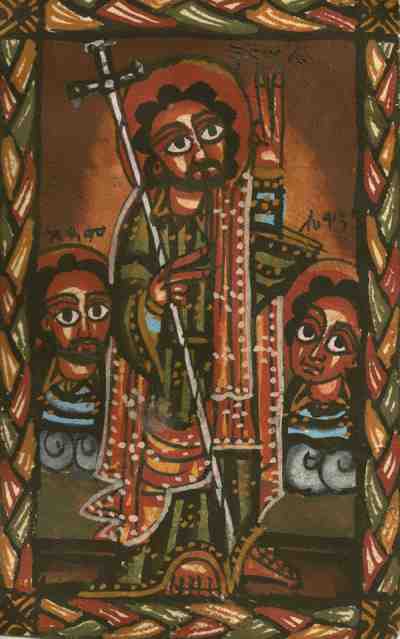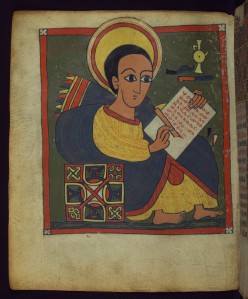Carry the gospel with you
Gospel of the day:
John 20:1a, 2-8
On the first day of the week, Mary Magdalene ran and went to Simon Peter and to the other disciple whom Jesus loved, and told them, “They have taken the Lord from the tomb, and we do not know where they put him.”  So Peter and the other disciple went out and came to the tomb. They both ran, but the other disciple ran faster than Peter and arrived at the tomb first; he bent down and saw the burial cloths there, but did not go in. When Simon Peter arrived after him, he went into the tomb and saw the burial cloths there, and the cloth that had covered his head, not with the burial cloths but rolled up in a separate place. Then the other disciple also went in, the one who had arrived at the tomb first, and he saw and believed.
So Peter and the other disciple went out and came to the tomb. They both ran, but the other disciple ran faster than Peter and arrived at the tomb first; he bent down and saw the burial cloths there, but did not go in. When Simon Peter arrived after him, he went into the tomb and saw the burial cloths there, and the cloth that had covered his head, not with the burial cloths but rolled up in a separate place. Then the other disciple also went in, the one who had arrived at the tomb first, and he saw and believed.
Reflection on the gospel: On Christmas morning, the Church remembered that the Lord was born. Yesterday, on the feast of St. Stephen, we recalled that he died. And today, on the feast of St. John, the gospel reminds us that he rose from the dead. Our celebration of the incarnation of the Lord includes both shades of light and dark; as we celebrate the Lord’s coming among us, we recognize that suffering is a dominant theme in the life this child will live. In the account of the resurrection we have today, John enters the tomb, and seeing it empty, believes. Our rejoicing at the Lord’s birth is perhaps marred by the recognition that in short months we will recount the narrative of his passion, but John gives us the key to both the incarnation and the passion by his intuition that the resurrection of the Lord orders all the facts of the Lord’s life in a way that invites our faith.
Saint of the day: Saint John the Apostle, also called Saint John the Evangelist or Saint John the Divine, flourished during the first century. In Christian tradition, he is said to be the author of three letters, the Fourth Gospel, and the Revelation to John in the New Testament. He played a leading role in the early church at Jerusalem.
 John was the son of Zebedee, a Galilean fisherman, and Salome. John and his brother James were among the first disciples called by Jesus. In the Gospel According to Mark he is always mentioned after James and was no doubt the younger brother. His mother was among those women who ministered to the circle of disciples. James and John were called by Jesus “Boanerges,” or “sons of thunder,” perhaps because of some character trait such as the zeal exemplified in Mark 9:38 and Luke 9:54, when John and James wanted to call down fire from heaven to punish the Samaritan towns that did not accept Jesus. John and his brother, together with Simon Peter, formed an inner nucleus of intimate disciples. In the Fourth Gospel, ascribed by early tradition to John, the sons of Zebedee are mentioned only once, as being at the shores of the Sea of Tiberias when the risen Lord appeared; whether the “disciple whom Jesus loved” (who is never named) mentioned in this Gospel is to be identified with John (also not named) is not clear from the text.
John was the son of Zebedee, a Galilean fisherman, and Salome. John and his brother James were among the first disciples called by Jesus. In the Gospel According to Mark he is always mentioned after James and was no doubt the younger brother. His mother was among those women who ministered to the circle of disciples. James and John were called by Jesus “Boanerges,” or “sons of thunder,” perhaps because of some character trait such as the zeal exemplified in Mark 9:38 and Luke 9:54, when John and James wanted to call down fire from heaven to punish the Samaritan towns that did not accept Jesus. John and his brother, together with Simon Peter, formed an inner nucleus of intimate disciples. In the Fourth Gospel, ascribed by early tradition to John, the sons of Zebedee are mentioned only once, as being at the shores of the Sea of Tiberias when the risen Lord appeared; whether the “disciple whom Jesus loved” (who is never named) mentioned in this Gospel is to be identified with John (also not named) is not clear from the text.
Spiritual reading: For me the most radical demand of Christian faith lies in summoning the courage to say yes to the present risenness of Jesus Christ. (Brennan Manning)
leave a comment